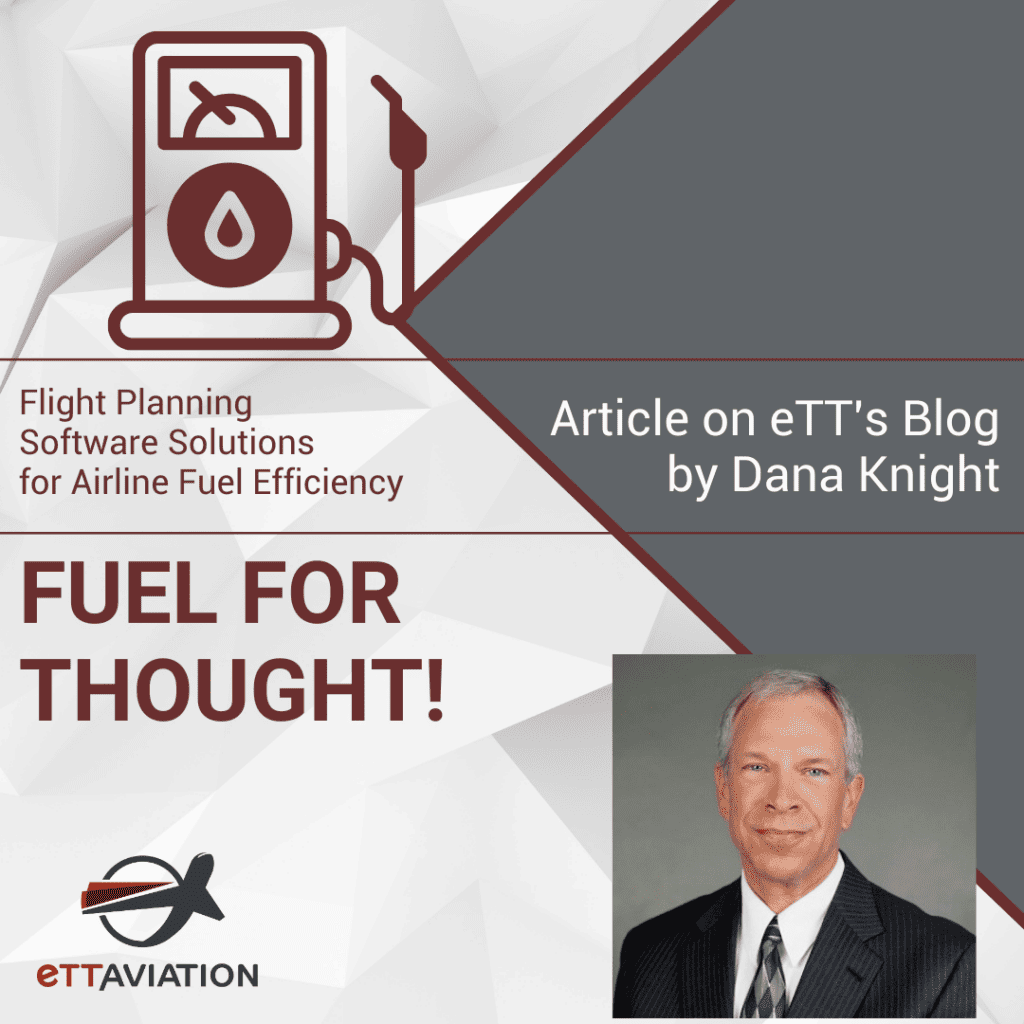By Dana Knight, Product Director for Flight Planning
In the dynamic sphere of aviation, fuel efficiency is not just an operational goal but a critical determinant of an airline’s profitability and environmental footprint. As airlines navigate the complexities of modern flight operations, the role of advanced flight planning software solutions in driving fuel efficiency has never been more pivotal. Let’s explore how these solutions are transforming the skies.

The High Stakes of Fuel Efficiency
Fuel costs consistently rank among the top expenses for airlines, directly affecting their bottom line. In an era where sustainability has become a global imperative, reducing fuel consumption also means significantly lowering CO2 emissions, and aligning with the industry’s commitment to environmental stewardship. Thus, optimizing fuel efficiency serves a dual purpose of reaching both economic and ecological goals.
Enter Flight Planning Software Solutions
Flight planning software solutions are at the forefront of this optimization, offering a blend of precision, automation, and advanced analytics. These systems employ sophisticated algorithms to calculate the most fuel-efficient routes – , taking into account variables such as weather conditions, airspace restrictions, aircraft performance data, and cost index flight planning.
Cost Index Flight Planning: A Closer Look
A critical aspect of these solutions is cost index flight planning, which balances fuel consumption against flight time to determine the most cost-effective speed for each flight. By tailoring flight speeds to current conditions and operational priorities, airlines can significantly reduce fuel usage without compromising on service quality.
The Role of Automated Flight Planning
Automation in flight planning further enhances fuel efficiency by ensuring that the most optimal routes and flight profiles are selected with minimal human errorintervention. Automated flight planning systems can quickly adapt to changing conditions, such as sudden shifts in weather or air traffic constraints, to maintain the most efficient course while keeping the workload of the Flight Planner/Dispatcher to a minimum.
The Impact of Route Planning and Optimization
Route planning and optimization is another cornerstone of fuel-efficient operations. By analyzing vast amounts of data to identify the shortest and least obstructed paths and optimum flight level, flight planning software can slash fuel consumption. This level of optimization also reduces the likelihood of delays, ensuring on-time arrivals and departures, which in turn conserves fuel.
Trajectory Management for the Future
Looking ahead, the integration of trajectory management into flight planning software promises even greater advances in fuel efficiency. By continuously monitoring and adjusting the flight path in real-time, trajectory management systems can respond instantaneously to optimize fuel burn throughout the flight.
Conclusion: A Sustainable Horizon
As the aviation industry continues to evolve, the importance of fuel efficiency will only grow. Flight planning software solutions are proving to be indispensable allies in this journey, offering airlines a way to minimize fuel consumption, reduce emissions, and enhance profitability. The future of aviation lies in harnessing these technologies to create a more sustainable, efficient, and economically viable industry.
In the quest for greater fuel efficiency, flight planning software is not just a tool but a transformative force, driving the aviation industry toward a greener, more prosperous future.